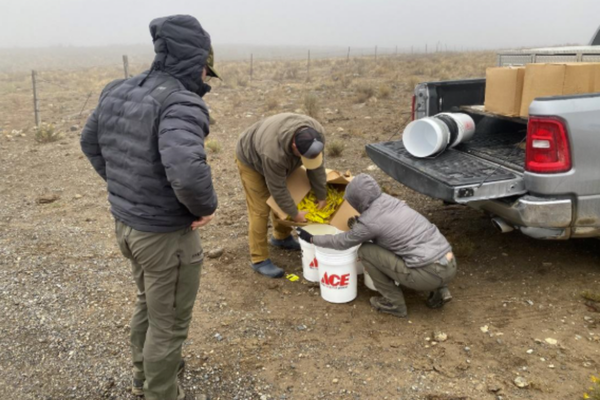By Land & Water, Idaho LWCF Sites Enjoy Bipartisan Support from State Senators
Light streamed down the canyon as we arrived at Niagara Springs Wildlife Management Area, the rock walls on either side of the Snake River sharply illuminated by the early morning sun. Senator Lee Heider (R-Twin Falls) tailed behind us in his truck, stepping out in the parking lot with a big smile and handshake. The three of us, Senator Heider, Brian Brooks and myself, plus one exuberant Labrador retriever were meeting at Niagara Springs to talk about the Land and Water Conservation Fund in a place that would not be in existence without it. In 1972, $209,410 in LWCF funds were used to acquire the land that is now the Niagara Springs WMA. We could hear quail in the distance, and the Snake River powered through the canyon just through the trees to our south. It’s a place that often sees families out for an afternoon of fishing, the after-work hunter who wants to stretch their legs, a rare public land hunting opportunity on that river stretch for a waterfowler, and anyone else wishing to dip down into that canyon and escape the hustle and bustle of the world above. In other words, it’s a place where LWCF very tangibly works for the people of Idaho, day in and day out. We readied our shotguns, pocketed a few extra shells and strode off into the sunlight and Russian olives.
Senator Michelle Stennett fishes the Big Wood River alongside her dog.
A month earlier and 100 miles to the north, IWF met with another Idaho state senator in Ketchum, Idaho. Senator Michelle Stennett (D-Ketchum) and a representative from First Lite, a technical hunting apparel company, gathered on a beautiful summer day to visit sites in the Wood River Valley that had been funded by LWCF – bikers and anglers enjoy a paved bike path that runs the length of the valley, park-goers can enjoy open spaces right in town, and trails have been maintained throughout the area, all in thanks to funds from the Land and Water Conservation Fund. After making our rounds to LWCF sites we found ourselves along the Big Wood River, setting up fly rods and sharing stories of lives lived in tune with the natural world we were surrounded by. When speaking of LWCF and it’s benefit to Idaho, Senator Stennett stated that “Ag and IT are the top two economic drivers in Idaho and the third is outdoor recreation, so this issue is an important one to our state.” It was an impossible fact to deny in that group of people, many of whose professional and personal lives hinge on access to the outdoors. Senator Stennett’s claim was further bolstered because in Idaho alone, the Land and Water Conservation Fund has allotted $279 million in project money since it’s enactment.
Recently, a bipartisan group of Congressmen introduced H.R.502, legislation that would reauthorize the Land and Water Conservation Fund. It’s a strong step in the right direction, but there is one catch – it lacks the dedicated funding to pay for projects, which means there is more work to be done. LWCF cannot do its job without funds – funds that would go towards projects just like the land acquisition of Niagara Springs, or the construction of fishing access in Ketchum, or building and maintaining rural county parks across the state, allowing for continued public access and outdoor recreation opportunities for current and future generation. LWCF is a puzzle that is almost complete, and the last remaining piece is getting it funded.
Bowie with a quail retrieve.
Back at Niagara Springs WMA, Brooks, Senator Heider and myself called it a morning with an hour of smiles, good conversation and a single quail to show for it. With a bit more time on our hands, and before parting ways with the Senator, Brooks asked Senator Heider if there were any more public places to hunt birds in the area. The Senator paused for a moment and shook his head thinking hard, the three of us quickly realizing just how valuable this LWCF-funded land acquisition from the 1970’s was for us today in the 21st century, creating a public haven for hunting and fishing in a sea of private land.
Senator Heider concluded, “This is a tremendous spot.”
Senator Lee Heider and IWF executive director Brian Brooks at Niagara Springs WMA in search of birds.







